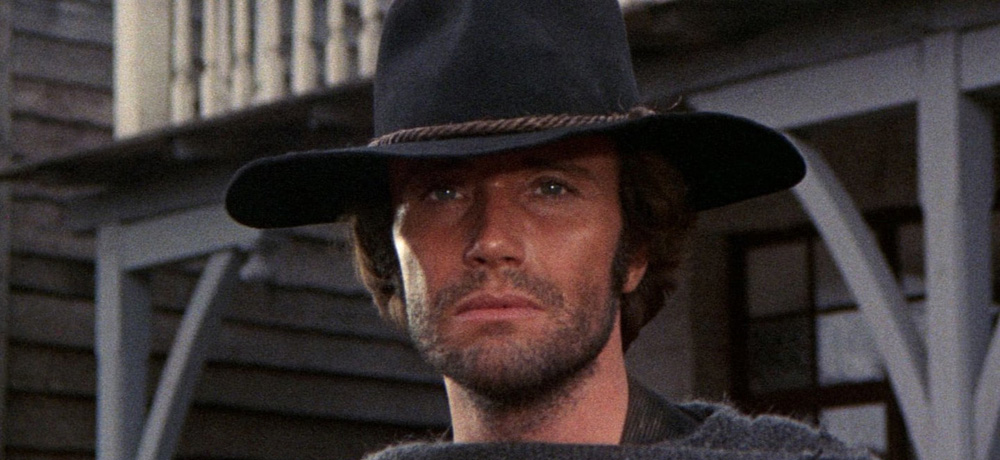


The Pale Door was one of my favourite films from last year, so that set my menial mind in motion with a mission: watch more Horror Westerns, dagnabbit. A lesser known sub-genre to be sure (especially since Westerns are part of even more vicious cycles of popularity/decline than Horror), but one I’m eager to explore. With that in mind, let’s head over to Italy for Django the Bastard (1969), one of writer/director Sergio Garrone’s (The Hand That Feeds Death) unofficial sequels to the Django series made popular a few years earlier starring Franco Nero. And while this isn’t a full-on merger of the two, this duster sprinkles just enough menace around to offer further proof the two can exist together.
Although Django the Bastard was released in Italy in November, it didn’t hit North America until the spring of 1974, where it could hang third on a triple bill for years to come. The ideal spot, really; fast paced, lots of shootin’, and a little bit of ghostin’, it hits that late night adrenaline rush needed to stay awake. (The last film on a bill should always burn down the barn before the drive home.)
The year is 1881; the place, the still Wild West. A man in dark apparel slowly rides into town. He gets off his horse, opens his poncho, and pulls out a wooden cross - a tombstone - with a man’s name on it, and plants it in the dirt caked street. The man in dark calls out his name, and shoots him dead. Right below his tombstone.
And we’re off and running on Django the Bastard. A tale born of vengeance and to these eyes, a direct influence on Clint Eastwoods’s High Plains Drifter (1973); with a very similar theme and a Clint avatar in actor Anthony Steffen (Killer Fish), it offers many of the same pleasures, but clings closer to aesthetics rather than its potent morality tale. That’s fine in these here parts; I don’t need anything deeper than revenge to propel the plot. Yet the film still manages to take a few left turns throughout its runtime in regards to character and plot. The main baddie’s son, Hugh Murdok (Luciano Rossi - City of the Living Dead), turns from pallid and dim wild card to cunning hunter, and our hero’s status - living or dead - is always in question.
I’m sorry, where are my manners? Django the Bastard, High Plains Drifter and others, are simply ghost stories in different dressing; cobwebs are exchanged for cracked and beaten saloon porches, and a black duster makes a suitable update to a white sheet. What you don’t expect is the influx of any new idea to a Western being the equivalent of an atomic bomb: it’s just as rigid a genre as Horror, and has the disadvantage of being tied to time with a naive perception of historical accuracy. (It’s gotta be the mud and the dirt, right?)
That still life template is challenged and bettered by the inclusion of the supernatural; another colour for a palette filled with anger, love, and revenge, yet always in earthly tones. Django the Bastard and its ilk add swirls of terror to the mix, bringing a different vibe to the canvas. (That’ll be the last art analogy. Probably ever.) But anyone around my vintage would remember Westerns as almost chaste, and certainly virtuous - but eerie never really figured into the picture.
Taking place 16 years after the end of the Civil War, Django the Bastard uses that psychological trauma to amplify the truth of a war lasting forever for a survivor, whether it be guilt, horror, or the chance that the Confederate soldier a few of you killed before joining the Union comes back from the grave for revenge. That’s as heady as it gets, and I believe that’s enough. I have shadowy gunfights to watch, and a lot of them.
Garrone and Steffen’s script is repetitive, but so would any Western that gives each character little development beyond spouting the usual sunbaked corn; hence without that, you have this: it’s the Jurassic Park III of Horror Westerns. How that sits is up to you, but III boiled the story down to chases effective enough to sprint through 90 minutes before anyone even noticed. Django has the same effect.
‘Sprint’ may be the wrong word here, as this was still the ‘60s; but for its time, it moves. The cast is solid, with the exception of Steffen, who seems to confuse somnambulism with stolidness. No, this is Hugh’s party, and we’re all invited to watch Rossi, with his translucent skin and shock blonde hair, holler and hoot in a bizarre aristocratic (and anachronistic) pass at mental illness.
The trail through Django the Bastard is an interesting one; it adds to the Western vocabulary without having quite the same impact on the Horror side of the town. Nevertheless, it has more than enough impact for me to saddle up, keep on, and find the next town haunted by its past. I’m sure it’s not too far away.
Django the Bastard is available on Blu-ray from Synapse Films.
Next: Drive-In Dust Offs: CATHY’S CURSE (1977)